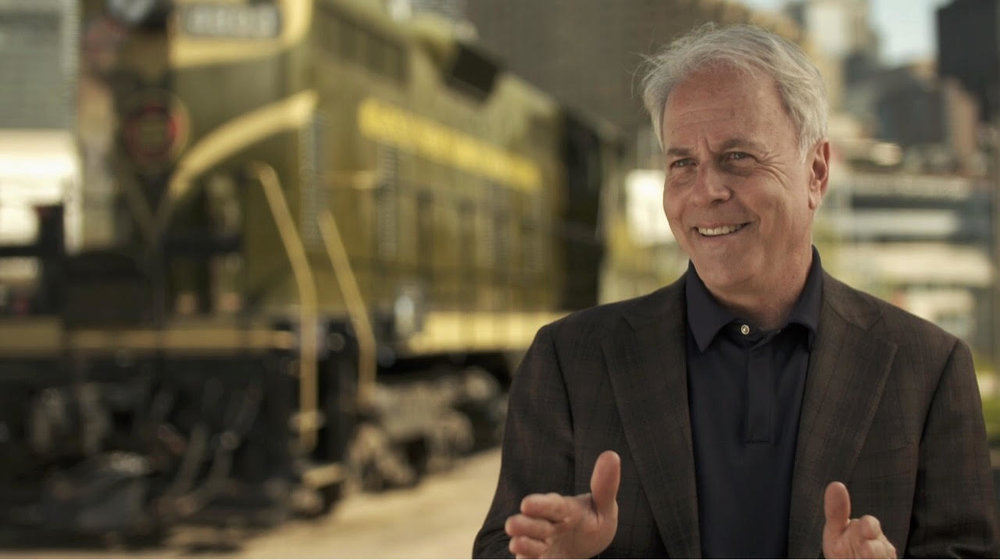I read upwards of 120 books every year, and during every 12-month stretch, I’ll come across a few business leaders, entrepreneurs, and start-up founders that I admire, appreciate and want to hold up for others to see and read about. Names in the recent past have included Alan Mulally, Bill McDermott, Ed Stack, and Hunter Harrison. The newest name I’m adding to the list is Joe Coulombe, the founder of Trader Joe’s. I would have loved to have met this larger-than-life creative thinker.
My Patty Civalleri Origin Story
One of my favorite books in 2021 was The Secret Life of Groceries by Benjamin Lorr. Furthermore, I got to interview Ben on the podcast too. The first chapter is devoted to Trader Joe’s which is what led me to Patty’s book that she co-authored with her friend, Joe Coulombe. Her book is Becoming Trader Joe: How I Did Business My Way and Still Beat the Big Guys. While the subtitle is accurate, I’d even call it an understatement after reading Patty’s book.
After reading her book, Patty said, “Absolutely yes,” in a request for an interview.
This is not Patty’s first book. She’s a global archaeology professional, and she’s written nearly a dozen books on some of her favorite places to visit. She has a great website showcasing all of her travel books and booklets.
During the first five minutes of our interview, my first thought was, “I wish we could be doing this interview in person.” Patty is a CEO and entrepreneur too. As you listen to her, you’ll find not just another highly-intelligent business executive and entrepreneur. She’s also a leader who cares about others and wants to see others grow and prosper.

Interview Highlights
- Joe’s c-store background
- He cared about people
- Product knowledge was key
- No branded products
- Assortment vs pricing
- Every SKU stood on its own and was a profit center
- No store fixtures
- No MBAs
- Marketing innovations: The Fearless Flyer, radio ads promoting only one item, and no vendor CO-OP dollars
- No layoffs and minimal turnover
- Joe’s life after Trader Joe’s – consulting
This is the most important single business decision I ever made: to pay people well.
Joe Coulombe
Not Covered in the Interview – Yet Important
There were other topics we did not get to address. Some of those included the Trader Joe’s business model around wine which is a mini MBA case study.
Dealing with unions and The Department of Labor. Regarding the latter, dealing with a DOL dispute was painful to read, but Joe reminds us that entrepreneurship and hairballs regrettably go hand in hand.
I liked the way the Aldi acquisition was covered near the end of the book. Business exits are hard, but I liked being able to understand what was going on in Joe’s head as he contemplated the sale of his business. The transaction was almost anti-climatic as Joe stayed on to run the business autonomously from Aldi.
Key Numbers at Trader Joe’s
Sales and profits. They are not the main thing. They are a result of a great product, a great consumer experience pulled off by people who care. Accordingly, financial statements were not included in the book. However, these relevant numbers were:
- 19% compound annual growth over 26 years
- During the last 13 years, no debt
- Never lost money in any year
- Each year was more profitable than the last
- Turnover was nearly non-existent
- Sales per square foot were $1,000 compared to the industry of $570
- No layoffs
In 2011, Whole Foods had a gross margin of 35%. To put that into perspective, Kroger’s was only 21%.
Kroger’s net margin was only 1% compared to 3% at Whole Foods.
While financials were not provided, I’m betting Trader Joe’s numbers were a few ticks higher than the margins of Whole Foods.
I believe in the wisdom that you gain customers one by one, but you lose them in droves.
Joe Coulombe
21 Big Ideas
Since reading American Icon in 2017, I cannot remember taking so many notes from a book as I did with Becoming Trader Joe. Here are 21 big ideas I pulled from the book, and this is just the shortlist.
- Reasonable strategy vs optimum strategy (from Joe’s reading The Guns of August)
- Paying people well
- Building OT into the compensation system
- Unions – pay scales vs seniority rules
- Long-term leases
- Easily reversible decisions
- Discontinuities (major product strategy at Trader Joe’s)
- High value per cubic inch, high rate of consumption, and easily handled
- Nordstrom’s – use your best judgment
- Joe’s use of writing and sharing his whitepapers
- Serving the highly educated but underpaid
- The emphasis on informative advertising
- Ad budgets – not based on a percentage of sales but on what it takes to get the job done
- Hairballs – unnecessary thorns coming unexpectedly
- Intensive buying
- Less than 20 miles between stores
- No leases with continuous operation clauses
- Double-entry retailing (outstanding)
- Payments – one of the first to accept VISA and MC
- Cash policy – at least 2 weeks of sales
- The Five Year Plans
If someone came into your business and studied it for one week, what would their 21-point list look like?
At that point, in February 1966, I wrote what I call a white paper, something that I have tried to do at every important turn of events. I started with the founding of Pronto Markets. In a white paper you try to write down everything you plan to do, and the reason why you think you should do it. That way, when things don’t work out, you can’t play the role of a Soviet historian and airbrush history. The other important use of a white paper is to circulate it to the troops, to engage their support and solicit their ideas.
Joe Coulombe
Other Shows to Listen To




Leave a Reply